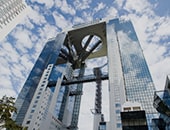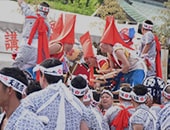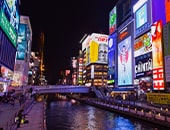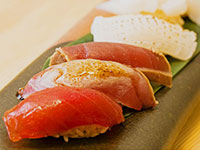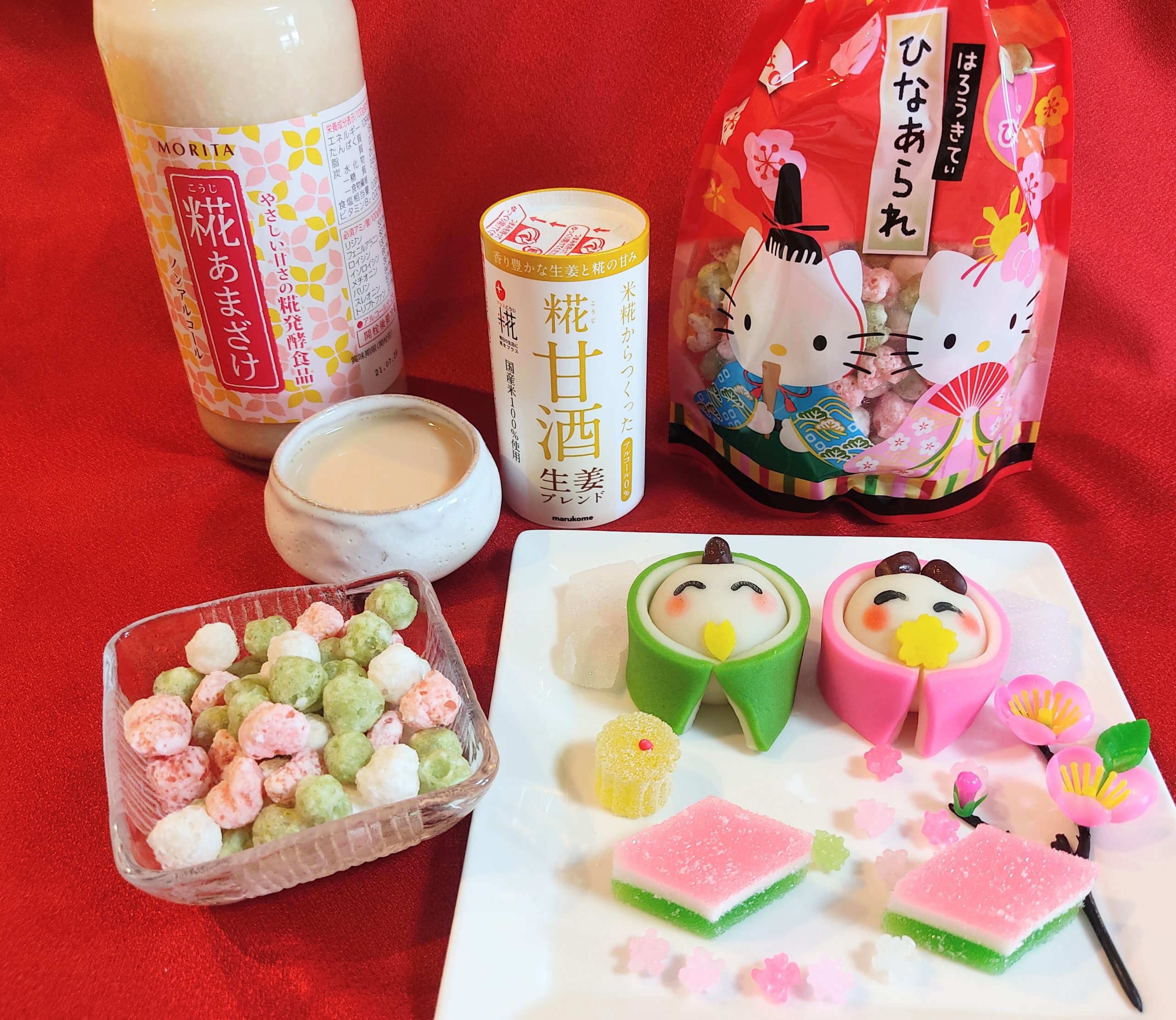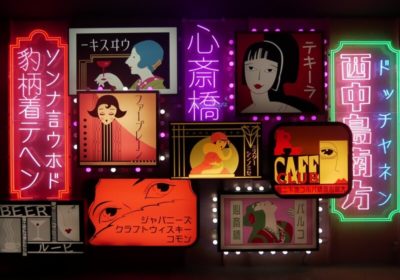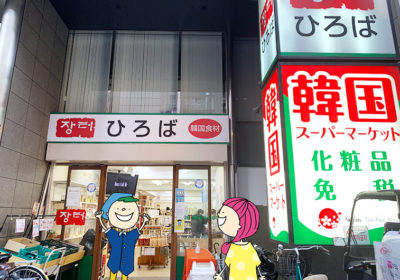

Supporter
Treasure-hunting for hina dolls and history in Osaka’s business district
In case you don’t have your own Hina Dolls at home, or even if you do, the Spring Semba Expo is a fantastic way to celebrate Hina Matsuri aka Dolls Day aka Girls’ Day in Osaka. For approximately one week leading up to Doll’s Day on March 3. For this special occasion, doll sets from wealthy families from the Semba area of Osaka are on display in the modern corporate buildings and historic architecture of this important business district in Osaka.
[Contents]
■Senba history and background
The Semba area (also written Senba) has its roots in the castle town that emerged west of Osaka Castle in the 16th century. The area has long been central to Osaka commerce and has a deep history and bustling streets that are lots of fun to explore.

Of course, most of the merchant houses and historic buildings have been lost to time or demolished to build the huge skyscrapers that tower overhead. However, the neighborhood remains vibrant and full of culture. Mixed among corporate buildings, you will find historic sights, and small monuments to the regions forbearers and their accomplishments. Although Semba is very much a business district, there are a handful of shrines and temples dotting the streets, plus so many elegant restaurants and cafes where you can relax and refresh while you learn about Osaka’s history and admire the hina dolls.
■Historic architecture, hina dolls, & the families who owned them
Please note that the hina doll displays and venues vary from year to year, so what you see during your visit may be different. Below are some of the doll sets and venues that participated in the 2023 Semba Doll Exhibition. I hope this gives you an idea of what you will be able to see if you visit this year!
●Ikoma Building

The Ikoma family began their watchmaking business in 1870 and with their successes they were able to construct this gorgeous brick building in 1930. The building itself is a registered cultural property and while the upper floors are office space, the 1st floor lobby is open to visitors. There is also a cafe serving alcohol and caffeinated beverages.

The Ikoma family Hina dolls were displayed on their original wooden boxes in the windows facing Sakaisuji Avenue.

The dolls, while still elegant and showy in their own right, are quite small, round, and adorable to look at.
●Sukunahikona Jinja Shrine

The shrine is located on Doshōmachi Street, historically known as Osaka’s “medicine district” for its ancient apothecaries and modern-day pharmaceutical companies. Sukunahiko Jinja Shrine has two deities, both related to medicine, Sukunahikona—the Japanese deity of medicine— and Shinnо̄-san—an emperor in ancient China and the legendary founder of Chinese medicine.

The set of Hina Dolls on the shrine grounds are from the late Meiji era (1868–1912) and include small tea sets, porcelain, and an adorable child-like doll and her set of geta. They were the property of Kiku Saito (later Kiku Besshо̄), the daughter of a merchant family in Semba, and she took them with her when she married into the Besshо̄ family, the family that has run Sukunahikona Jinja Shrine since 1910.

●Shibakawa Building

This 1927 building facade is inspired by Mayan and Incan architecture from Latin America, however it incorporates many European-style elements as well. It was once a Western goods import business and finishing school, and today Shibakawa Building features a number of boutiques, a bar, restaurant, and cafe.

The Shibakawa family dolls are traditional 7-tier sets. And there are 4 of them! Dolls from the four daughters Yayoiko, Sumire, Haruko, and Ayako take up the entire exhibition space on the rooftop terrace in Shibakawa building. Before you even reach the rooftop, you’ll be greeted by photos of the Hina dolls tier-by-tier which line the staircase.


The Shibakawa family originally moved to this corner of Semba in 1837 and established their residence, which was rebuilt by a later generation and became Shibakawa Building. The 4 girls’ (Yayoiko, Sumire, Haruko, and Ayako) mother was from Kyoto and so the elder two daughters have sets of dolls from a famous shop in Kyōto, while the younger two daughters were born after the family moved to Tokyo and their sets reflect the Tokyo style. Compare the styles in hina dolls from Eastern and Western Japan. See if you can tell which is which!


Interestingly, one of the sets is missing the Emperor and Empress dolls from the top tier. They have been replaced by a painting of the dolls by Osaka artist Naoki Chokujо̄.

●Mitsubishi UFJ Bank Osaka Building

Built in 2017, this 21-story building is located directly on Osaka’s main boulevard, Midosuji. The first floor is a sprawling lounge open to the public with seasonal paintings, displays of old currency dating back to the Edo period (1603–1868), and a cafe.
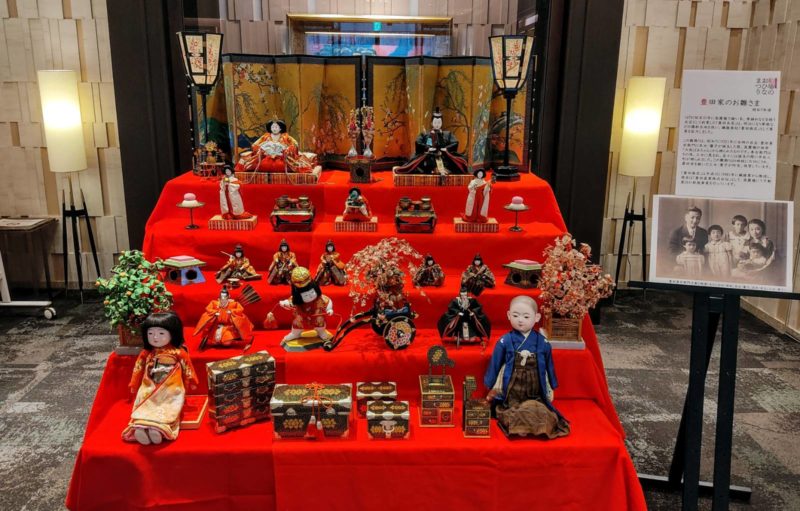
Hina dolls from the Toyota family, a merchant family that can trace its roots in this area back to 1675. The dolls belonged to Keiko Toyota, who received the dolls as a gift in 1932 from her grandmother, who lived in this area of Semba.
This is not an exhaustive list of the buildings and doll displays, so expect to see more when you visit.
■Special performances, drinks, & more
It is worth noting, that although the Hina Dolls are only on display for one week in early spring, the gorgeous buildings and fantastic architecture is here year-round. Many of the establishments mentioned above are open to the public, so you can admire the architecture and experience the history alongside cutting-edge modernity in Osaka’s merchant district.

During the Spring Semba Expo, there will be a number of events related to Hina Matsuri, including musical performances, dance, the tea parties.
You may have noticed many of the doll sets include 5 court musicians, known as gonin-bayashi. Every year the Yamamoto Noh theater holds a traditional court music performance using instruments the musicians are holding. Listen in on the 2021 concert↓


